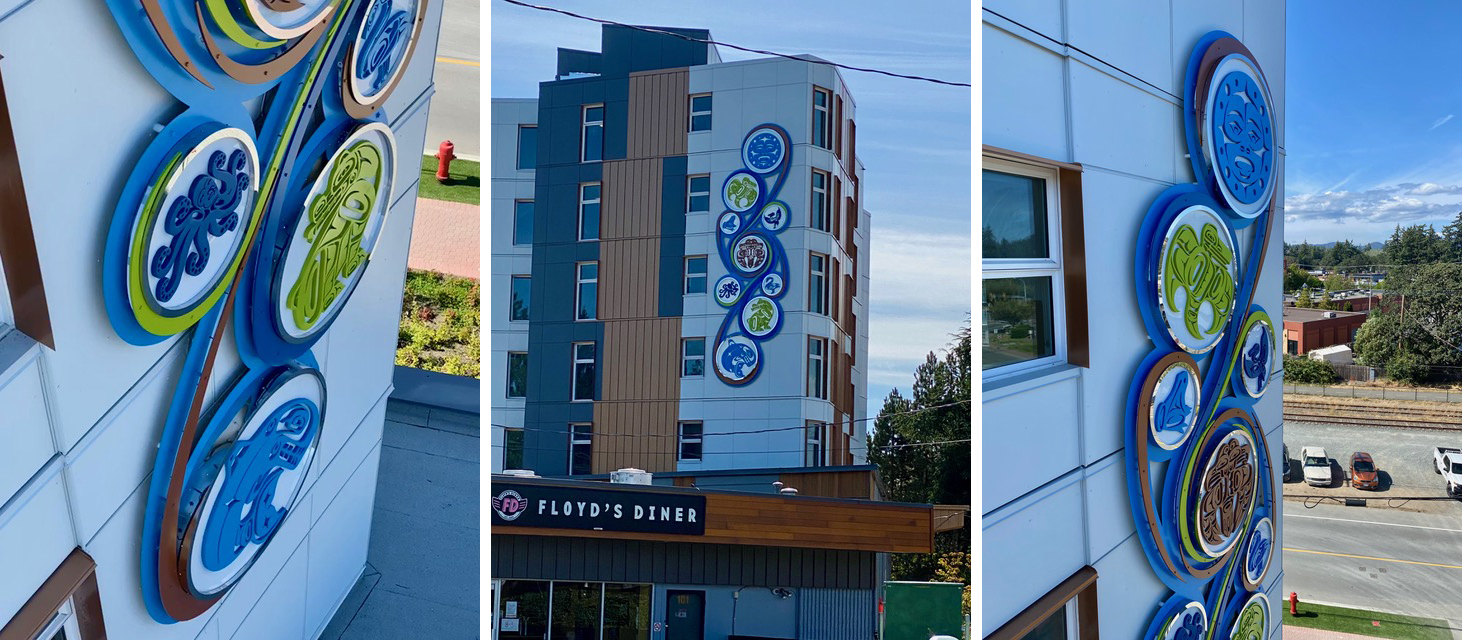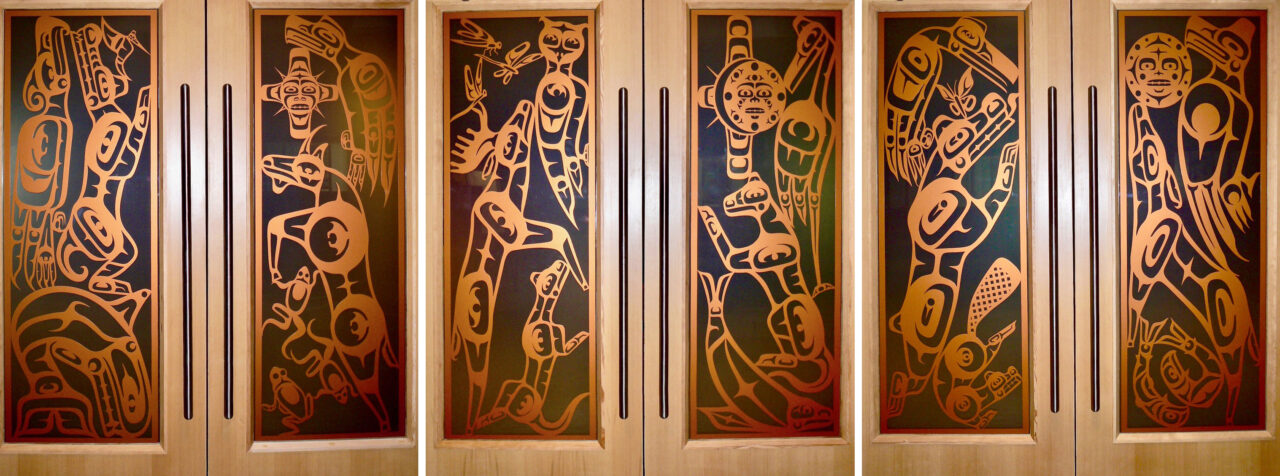Connie Watts on Fluidity in Practice and Creativity Without Borders

Posted on | Updated
Connie’s interdisciplinary creative career demonstrates a sustained focus on interconnectedness, rather than on difference.
Myriad possibilities are opened up by rethinking — or unthinking — the relationship between the categories of art and design, says Connie Watts, Associate Director of the Aboriginal Gathering Place at Emily Carr University.
Connie sees creative practice, whether her own — which includes a recent project working with M’akola Development Services on a new suite of offices and design installations in Langford, BC — or anyone else’s in a more holistic way.
“‘Art’ and ‘artist’ are very colonial terms. Same with ‘design’ — a very colonial term,” she says.
“I think of my practice as creating access. Creating access to spaces that work well; creating access to a story or a knowledge-base through art; or creating access to our own languages. I think my approach will always be, and always is, creating access.”
This shift in how creative work is perceived and performed is a part of decolonial practice. It’s also a powerful lens through which the interactions between spaces, objects and people can be seen anew — to the benefit of the communities whose lives are lived within those spaces and around those objects.

Connie’s comprehensive design work for M’akola’s latest affordable housing development is a living example of this approach. Her design includes a roomy, open-plan office environment with shared working areas, bookable, closed-door rooms for private or group conversation, and artwork to identify individual spaces; a reception area featuring artwork, photography and free-standing sculptural signage, detailing M’akola’s work in community outreach, as well as its Indigenous roots; and a three-storey-tall sculptural relief on the building’s exterior, entitled Life Energy. There are few areas, in fact, where Connie’s touch is not visible — a fact she says reflects her approach to creative work more broadly.
“As an interior designer and an artist, I am living the way that we used to,” she says. “We never had things separated. They’re all fluid. They all flow together.”
The open-plan office is a further, formal reflection of that breaking down of boundaries and hierarchies, Connie adds. It also moves toward what she views as a deeply human desire to be unconfined.
“I think that people are human beings and they want to feel that freedom,” she says. “They want to feel that non-restrictive space.”

The sculptural installation, Life Energy, likewise gestures toward a more holistic view of both the world and the human experience of it, Connie notes. Included among the object’s orbiting shapes are “the moon (emotions and magnetization), raven (intelligence and imagination), bear (strength and protection), and orca (family and loyalty).” The four directions — which are used in medicine wheels — are also represented, she writes in a statement about the work.
“The north is air, the east is fire, the south is water and the west is earth. The animals contained in the curve are meant to enhance these elements: the heron (magic and sacredness) in the north; the swan (purity and integrity) in the east; the octopus (miraculousness and strength); and the frog (communication and transformation).”
The project represents Connie’s latest work for the M’akola Group, following her 2016 completion of a full-scale interior/exterior design job for the group's 8,000 sq. ft. headquarters, also located in Langford, BC.

She notes that drawing links between categories sealed off from one another in colonial taxonomies is not just a conceptual project — it extends to the ways in which she has built her career. Ensuring authentic, caring relationships with her clients, in particular, has been key, she says, both in terms of choosing which projects she pursues, and in terms of delivering a design that is more than just a pretty space.
“The relationship has to be really good,” she says. “I think it's that Indigenous way of being that lets me interface between the idea of interior space and what people are actually building as a business, and then translating that into something that is an artistic expression of their commitment to whatever they're working on.”
With that priority as a starting point, she says, notions of expertise — or the need to define a work as belonging to one discipline or another — cease to be important, or even useful.
“I'm not an expert in any of the disciplines I practice,” Connie says. “I wouldn't call myself a graphic designer, for example, because I don't have that training. But I know how to resource, I know how to make, and the tools are getting easier and easier to use.
“It's justified that there are areas of expertise. But there is a strength in focusing on those ways in which there is connectedness.”